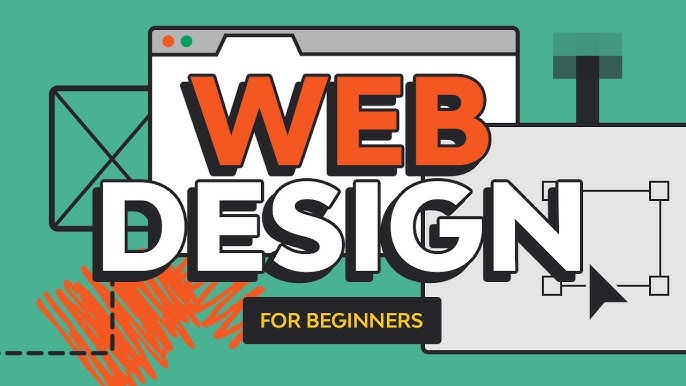Aligned Position Web Design: Perfectly Designed Websites to Capture Your Audience’s Attention
Aligned Position Web Design: Perfectly Designed Websites to Capture Your Audience’s Attention
Blog Article
The Very Best Kinds Of Web Design to Improve Customer Experience and Engagement
In the ever-evolving landscape of digital communication, the efficiency of Web style dramatically influences user experience and involvement. Different style approaches, such as minimalist, responsive, and interactive layouts, each offer one-of-a-kind benefits that can cater to diverse user demands.
Minimalist Web Style
As electronic landscapes come to be significantly cluttered, minimalist website design has actually become an effective method to improving user experience. This design ideology focuses on simplicity, concentrating on important aspects while eliminating unnecessary diversions. By utilizing adequate white space, simple navigating, and a restricted shade palette, minimalist design fosters clearness and directs customer attention to essential web content.
The core concept of minimalist Web design is to produce a seamless interaction for customers. By minimizing cognitive load, users can swiftly realize information without feeling overwhelmed. This direct approach not just enhances functionality yet likewise urges interaction, as site visitors are more probable to discover a site that is very easy and visually enticing to browse.
Furthermore, minimal style usually emphasizes typography and images, utilizing these aspects purposefully to convey messages successfully. In essence, minimal Web style is not simply a fad; it is a thoughtful method that recognizes the importance of user-centered style.
Receptive Website Design
In today's varied electronic setting, receptive website design has actually come to be essential for producing a seamless user experience throughout a wide range of gadgets. As customers accessibility sites on mobile phones, tablet computers, laptops, and desktops, the capacity of a site to adjust its format and web content to various screen sizes and resolutions is crucial.
Receptive Web layout employs versatile grids, images, and CSS media questions to ensure that Web content exists efficiently, despite the gadget utilized. This technique not only improves the aesthetic charm of a website but additionally substantially improves usability. Customers are more probable to engage with a site that uses a regular experience, as it gets rid of the frustration of needing to zoom in or scroll excessively.
By adopting receptive layout, companies can boost their visibility and get to a broader target market. In recap, receptive Web design is a fundamental practice that improves individual experience, interaction, and total satisfaction.
Interactive Website Design
Responsive website design lays the foundation for improving individual experience, but interactive website design takes this a step additionally by engaging customers in a more dynamic way - Aligned Position Web Design. By incorporating components such as animations, clickable prototypes, and real-time responses, interactive website design captivates users, drawing them into a richer surfing experience
This method not only promotes interaction but also motivates customers to discover content proactively rather than passively eating it. Techniques such as gamification, where users earn incentives for finishing jobs, can substantially enhance the time spent on a site and improve general contentment. Interactive functions can streamline intricate info, making it a lot more digestible and pleasurable.

Integrating interactive design components can additionally result in greater conversion prices, as customers are more probable to engage with a site that actively includes them. Aligned Position Web Design. Ultimately, interactive website design changes user experiences into unforgettable journeys, ensuring that visitors return time and again
Flat Design
Identified by its minimalistic strategy, flat style stresses simpleness and capability, removing unneeded aspects and focusing on essential attributes. This design ideology prioritizes use, making certain that individuals can navigate interfaces with ease and performance. By utilizing a tidy visual, level style gets rid of the mess commonly discovered in extra elaborate styles, thus enhancing individual concentrate on web content and functionality.
The characteristic of flat style hinges on its usage of strong colors, easy typography, and geometric shapes. These aspects add to a visually attractive interface that is both modern and approachable. Additionally, level style promotes a sense of clarity, permitting customers to determine crucial actions and information without diversion.
Furthermore, flat design is especially effective in receptive Web design, as its simpleness converts well throughout numerous gadgets and display sizes. The absence of complex appearances and slopes decreases loading times, which is vital for keeping customer engagement. As digital landscapes continue to progress, flat design stays an appropriate choice for developing straightforward websites that enhance general experience. By concentrating on important functions, level layout not just satisfies user demands however likewise urges seamless communication, making it an essential part of effective website design techniques.
Adaptive Web Style
Flexible website design customizes the individual experience by developing numerous fixed formats customized to various display dimensions and tools. Unlike responsive design, which fluidly readjusts a single layout, adaptive style employs unique formats for specific breakpoints, ensuring optimum discussion on numerous platforms. This technique enables designers to concentrate on the special qualities of each gadget, boosting usability by delivering exactly what users need based on their context.
Among the key advantages of flexible Web design is its ability to optimize load times and performance. By offering customized web content and photos that fit the individual's gadget, sites can lessen information usage and boost loading speeds. This is especially useful for individuals with slower links or restricted information strategies.

Additionally, adaptive design assists in an extra regulated and constant branding experience. Because designers produce multiple designs, they can make sure that the aesthetic elements align with the brand's identity across various platforms - Aligned Position Web Design. This results in a natural customer experience, improving engagement and advertising customer have a peek at this site retention
Final Thought
Minimalist design fosters quality and focus, while responsive layout guarantees versatility across different devices, advertising availability. Jointly, these design approaches add to the production of click here for more info straightforward environments that not just boost complete satisfaction but likewise drive greater conversion prices, underscoring their vital importance in contemporary Web design approaches.

Minimal design promotes clarity and focus, while receptive style ensures adaptability throughout various devices, advertising availability. Collectively, these style comes close to contribute to the creation of straightforward atmospheres that not only improve fulfillment yet additionally drive higher conversion rates, underscoring their essential relevance in contemporary Web design strategies.
Report this page